Transcription of NetSuite Data Center
1 NetSuite currently operates geographically distinct data centers across North America, Europe, and Asia-Pacific. Each data Center has a counterpart that provides data mirroring, disaster recovery and failover capabilities in its region in case any data Center becomes non-operational. The NetSuite service is natively multi-tenant and leverages cloud infrastructure designed around multiple layers of data Management, Security, Performance and AvailabilityNetSuite data CenterData Center LocationsNorth America Seattle Santa Clara Phoenix Chicago Boston AshburnEurope London Dublin Frankfurt AmsterdamAsia-Pacific Sydney MelbournePage 2 NetSuite data Center InfrastructureData Management Redundancy: Many layers in the NetSuite system contain multiple levels of redundancy.
2 This design allows uninterrupted service because redundant systems automatically assume processing in the event that one or more elements fail. Disaster Recovery (DR): Within each region, data is replicated and synchronized between data centers. Semi-annual DR exercises ensure that systems and processes are in place, as well as to assess and enhance the competency of all personnel key to the successful implementation of DR activities. data centers use archival backups to support customer-initiated data restores for 60 days. Scalability: NetSuite supports over 29,000 customers with over billion application requests per day and more than six petabytes of data under management.
3 The system has been designed to accommodate routine surges and spikes in usage, and to scale upward smoothly to address increased transaction volume. Product Security Encryption: Transmission of user credentials, as well as all data in the resultant connection, are encrypted with industry standard protocol and cipher suite. NetSuite supports Custom Attribute encryption and provides encryption APIs. NetSuite uses token-based application authentication and multi-factor end-user authentication. Oracle | Terms of Use and PrivacyPage 3 Role-Level Access and Idle Disconnect: Each end user can be assigned a specific role with permissions that are specific only to his or her own job.
4 There is a complete audit trail that tracks changes to each transaction by the user login details and a timestamp. Multi-factor authentication (MFA): Multi-factor authentication (MFA) is another layer of securing user access to your NetSuite account. In addition to a username and password, a role can be configured with an additional layer of protection where users provide a verification code. The verification code can be obtained from an authenticator app, or for example, by a message sent to a mobile phone. Robust Password Policies: Customers have granular password configuration options, ranging from the length of the passwords to the password expiration policy.
5 They can set up strict policies to ensure that new passwords vary from prior passwords and that passwords are complex enough to include a combination of numbers, letters and special Security Continuous Monitoring: NetSuite employs both network and server-based Intrusion Detection Systems (IDS) to identify malicious traffic attempting to access its servers and networks. Security alerts and logs are sent to a Security Information and Event Management (SIEM) system for monitoring and response actions by a dedicated security team. Separation of Duties: In addition to mandatory employee background checks at all levels of the operations organization, job responsibilities are separated.
6 The Principle of Least Authority (POLA) is followed and employees are given only those privileges that are necessary to do their duties. Physical Access: All data centers maintain stringent physical security policies and controls including photo IDs, proximity access cards, biometrics, single person entry portals and alarmed perimeters. Dedicated Security Team: Oracle NetSuite employs a global security team dedicated to enforcing security policies, monitoring alerts and investigating any anomalous system behavior including unauthorized connection attempts and malicious software.
7 Near real-time monitoring is in place with a 24x7 worldwide incident response capability. All access to production is approved and regularly reviewed by the security team. data Center Performance Audits: There are auditing controls appropriate for SOC 1 Type II, SOC 2 Type II, ISO 27001 and PCI compliance. NetSuite has implemented a comprehensive risk management process modeled after the National Institute of Standards and Technology s (NIST) special publication 800-30 and the ISO 27000 series of standards. Periodic audits are carried out to help ensure that personnel performance, procedural compliance, equipment serviceability, updated authorization records and key inventory rounds meet or exceed industry standards.
8 Oracle | Terms of Use and PrivacyPage 4 Security Certifications: Oracle NetSuite issues reports upon the completion of periodic SOC 1 Type II and SOC 2 Type II audits and is certified for PCI DSS and ISO 27001:2013. Oracle NetSuite has defined its Information Security Management System in accordance with NIST 800-53 and ISO 27000 series standards. Independent third-party auditors prepare and conduct SOC 1 Type II and SOC 2 Type II audits. A SOC 1 Type II audit report is essential to meeting the reporting requirements on the effectiveness of internal controls over financial reporting of Section 404 of the Sarbanes-Oxley Act.
9 SOC 2 Type II reports on controls that directly relate to the security, availability and confidentiality trust services criteria at a service organization. PCI DSS is a security standard designed to ensure that companies are processing, storing and transmitting payment card information in a secure environment. A PCI Qualified Security Assessor (QSA) issues an Attestation of Compliance (AOC) to NetSuite . Privacy Certifications: Oracle NetSuite performs reviews and annual audits, conducts privacy risk management and oversees remediations, oversees privacy by design in technology and processes has a third-party vendor management program to ensure that the suppliers adhere to the privacy regulations, and is committed to maintaining and improving its privacy information management and data protection programs.
10 Oracle NetSuite also provides Product Feature Guidance documents that describe how the service functionality is designed to assist customers with their privacy requirements . Oracle NetSuite has extended the ISO 27001 Information Security Management System to include the ISO 27018 control set, demonstrating protection and adequacy for processing Personal Information as a Public Cloud Hosting Provider. Oracle NetSuite s adherence to the EU Cloud Code of Conduct (CoC) has been verified and published on the monitoring body s public registry. The CoC has been designed to define general requirements for cloud service providers as processor, demonstrating sufficient guarantees under Art.



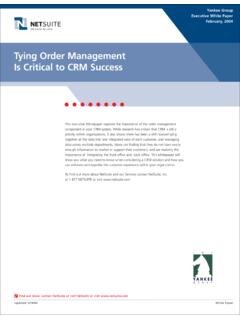
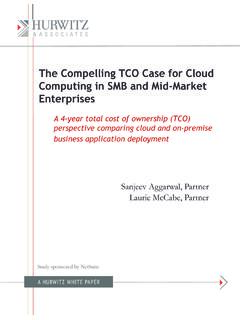
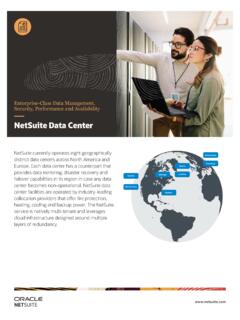

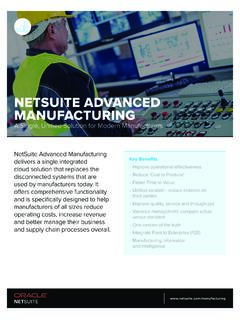


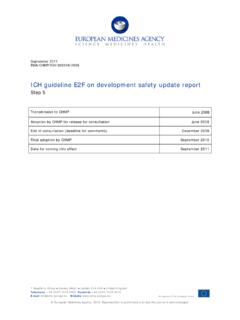
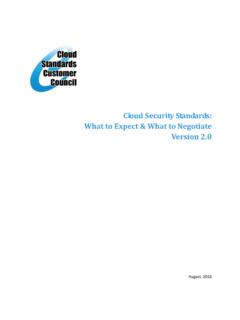
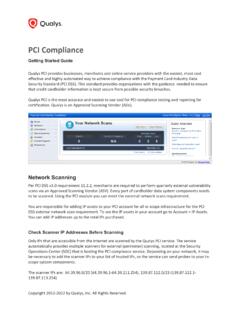

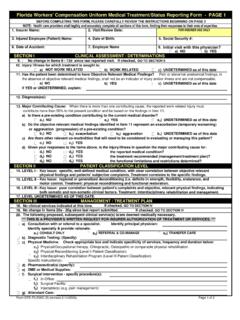




![OASIS-D Handouts [Read-Only] - Missouri](/cache/preview/4/1/8/8/d/0/c/c/thumb-4188d0cc42126ac4ffb163575ec3054a.jpg)